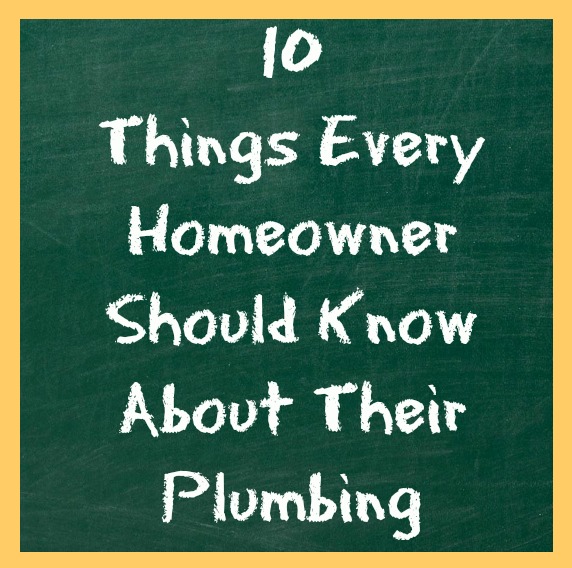When you are looking to buy a new home, or when you bought the home you live in now, there are many factors that I am sure you consider or considered: the number of bedrooms and bathrooms, the size of the backyard, the size of the kitchen, the style of the home, the type of flooring inside and maybe even the surrounding neighborhood. However, the most important thing that should be considered is generally the furthest from our mindS; THE HOME PLUMBING SYSTEM!
Major plumbing repairs can easily cost us thousands of dollars in a single shot, and whether you are a new homeowner or not, that can be a devastating blow. So what should you know about your home plumbing system or know about a plumbing system before you buy a new home?
Here are 10 things every homeowner should know about their home plumbing systems:
1. Know where water comes into your house and know how to shut it off.
If a major leak were to ever occur, knowing where the water shutoff valve is, is essential. Knowing this from the get-go can save you a huge amount of time and stress, not to mention money from any water damage that may occur.
2. Know where the gas supply comes into your house and know how to shut it off.
(Yes, plumbers take care of gas piping too!) Gas leaks are an extremely serious issue. If you ever smell gas, and you know where the gas shutoff valve is located, turn off the gas immediately and call your local gas company. In the amount of time it takes the gas company to get to your home, anything can happen, so knowing this is important.
3. Make sure all faucets and water driven fixtures have an accessible and operable emergency shutoff valve or angle stop valve.
For an overflowing toilet or local fixture repair, knowing where these shutoff valves are located can be very helpful. Also make sure to check the condition of these valves. If you notice a small leak or you notice an older 1-piece model, get them replaced quick!
4. Know if you use a city sewer or a septic waste system.
If you use a city sewer, know that you are responsible for all of the drain pipes from your home to the point of entry at the city sewer main. You should also know an approximate location of this point of entry and where your lateral line runs from your home to that point. If you use a septic waste system, make sure you know where it is located on your property and have regular maintenance at least once every 3 years. Without proper care your backyard can easily flood with waste water.
5. Make sure you have drain cleanouts, know where they are and make sure they are accessible.
Sewer cleanouts are just as important as emergency shutoff valves. Knowing where they are located is a must if you ever run into any drain clogs or mainline stoppages in your home. If you don’t have one, get one!
6. Know your water temperature and pressure.
Temperature that is too high can easily scald skin within a split second. High pressure can cause water hammering in pipes, but can even cause major pipe bursts. These vitals should be routinely checked with every plumbing visit.
7. Know what types of pipes you have and if possible, how old they are.
Older types of piping material such as galvanized or clay can easily corrode, rot or break and crumble. If you have older pipes, it is recommended that they be replaced immediately. Newer pipe materials, such as pvc, copper or pex, although made to last, sometimes have their own issues too. So knowing which type of pipe you have can make a plumbing visit much easier.
8. Know what type of water heater you have, and if possible, how old it is.
The normal lifespan of a water heater is approximately 7-10 years. If your water heater is within this age bracket or older, you may be close to replacement.
9. Make sure there aren’t any water leaks.
Water damage caused by water leaks can be a major issue and can easily cost a homeowner thousands of dollars to repair. Check for signs of water damage around your home or before you buy and get those leaks fixed quick!
10. And if possible, know what the inside of your pipes look like.
The only way to do this is with a quick camera inspection by your local trusted plumber. This quick inspection can easily detect things like root intrusion and sludge clogged drains, which can eventually lead to sewer stoppages and waste backing up into your home. Detecting these threats early, learning the severity of these threats, and taking action to keep them from getting worse or ridding your system of them completely is the smartest thing to do. Otherwise, you’ll end up with a cracked pipe or a backed up bathtub and you’ll be calling in an emergency!





